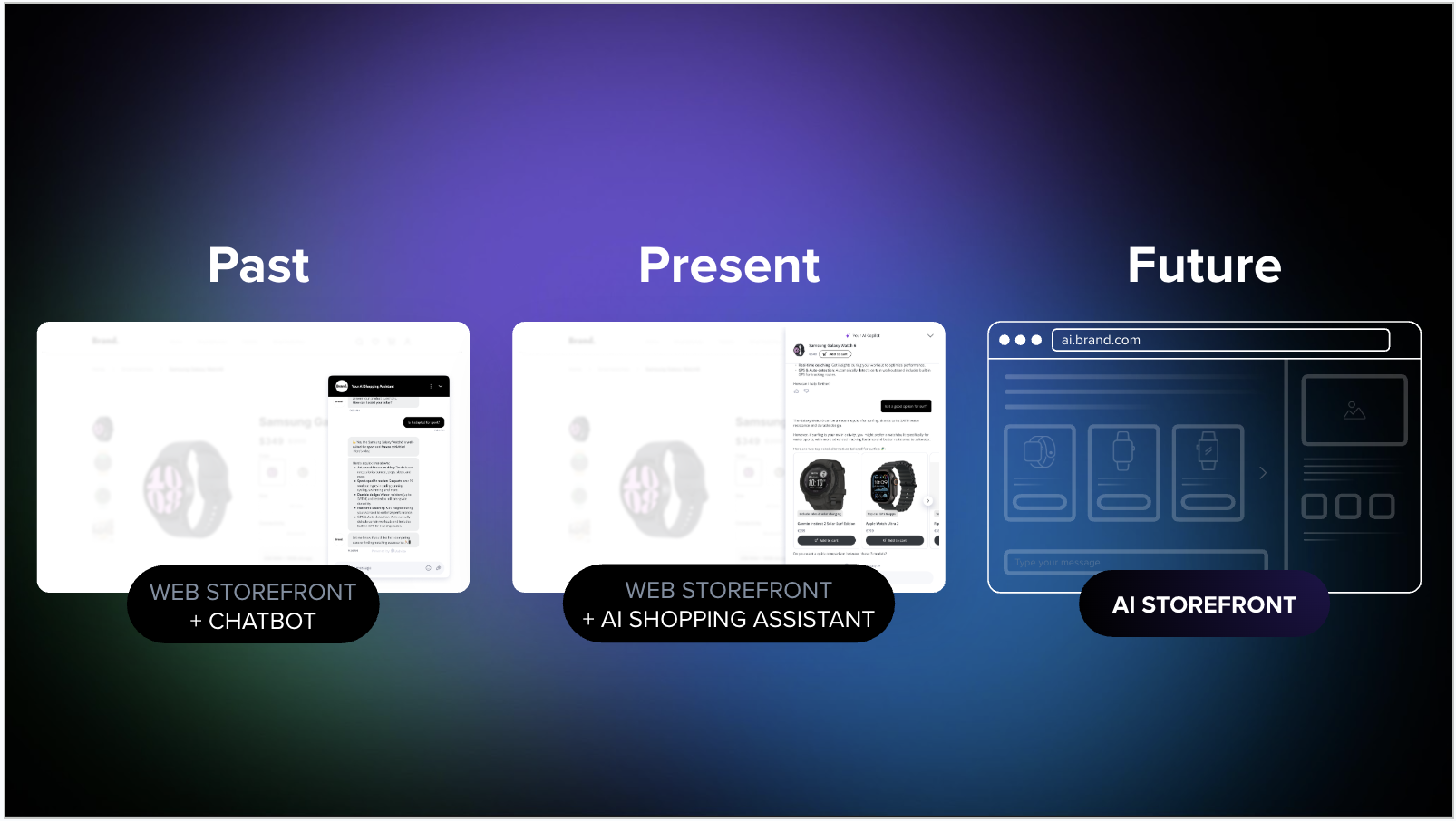How to Turn Customer Care from a Cost Center to a Profit Center
iAdvize

Although most brands tout the "customers come first" motto, that doesn't always ring true in practice. In fact, many companies have prioritized efficiency over service in their customer care organizations. An over-emphasis on time-based metrics has caused service professionals to rush through some contacts, leading to a sea of frustrated customers.
Another thing we all know: Unhappy customers are likely to take their business elsewhere. One Oracle study found that 90% of customers who defect say poor customer service led them out the door. On the flip side, 86% of people in that same study said they'd happily pay more for a better experience.
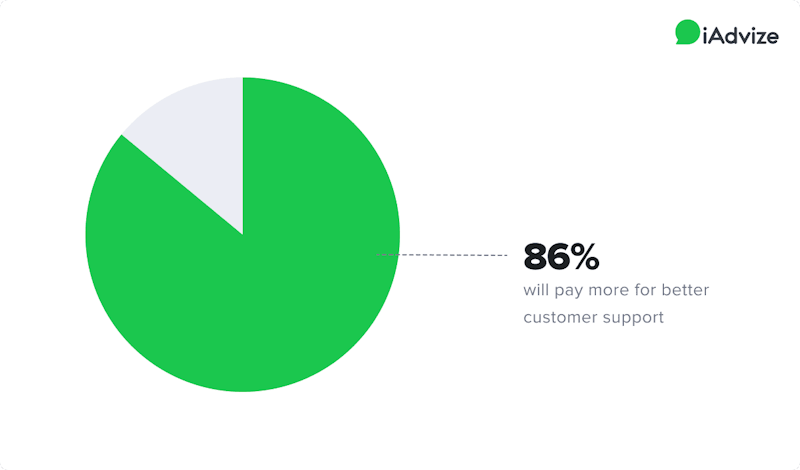
https://www.groovehq.com/blog/reduce-customer-churn
Here's a simple truth: Companies can't keep trying to cut back on customer care and expect to foster customer happiness. It's time for a new mindset, one that views customer care as a profit center.
That doesn't mean that you abandon your quest for efficiency and cost containment. Instead, with the right solutions in place, you can eliminate some of your care cost burden through automation and contact deflection. But you can do more: You can use technology to empower your care team members to deepen their knowledge and engage with professionals in meaningful, positive ways.
These changes in your customer care strategy will have a ripple effect that leads to efficiency gains, increased employee satisfaction, and better customer experiences (CX). All those things add up to more revenues and higher profits for your business.
The Old Way: Customer Care as a Cost Center
For years, most companies have viewed customer care organizations as cost centers—or at best, minimally profitable. The chief goal was providing acceptable service at the lowest cost possible.
As a result, organizations built their information technology (IT) and phone systems to shorten live call times and maximize closed cases. In these environments, IT solutions feature extensive monitoring and analytics to ensure representatives focus on speed and efficiency, with the aim of shaving a few seconds of calls.
Self-service, whether online or through phone menus, was another cost-cutting tactic. Without question, self-service does save money, with one Forrester economic impact study finding it can save $11 per contact. Plus, self-service caters to consumers' desires to resolve issues without intervention. Still, many people still reached out for live support if their issues proved too complex to solve on their own.
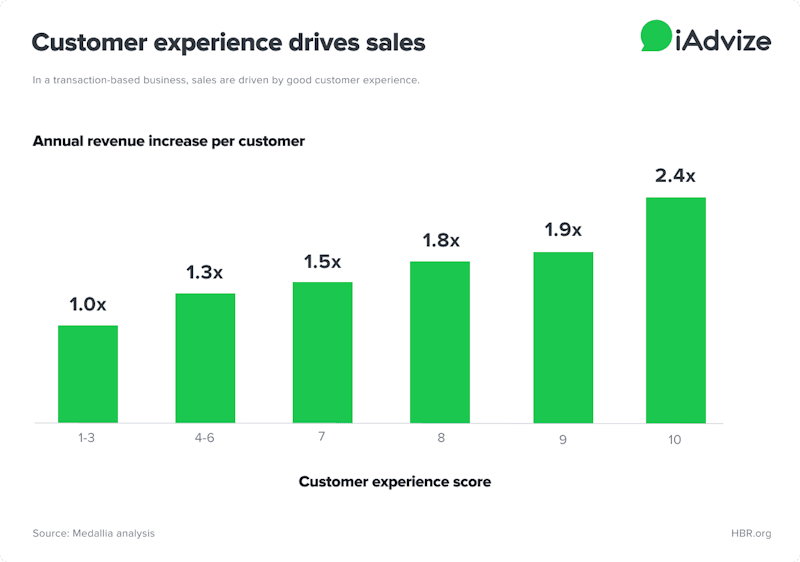
https://www.superoffice.com/blog/customer-self-service/
A Race to the Bottom
What's the problem with this model? Organizations assumed that there was no revenue opportunity in customer care and focused only on cutting costs, not upselling. This approach mirrors the "race to the bottom" model in which competitors vie for customers by undercutting others on price.
We've all seen the effects of "race to the bottom" in industries like air travel, cable, and telecommunications, where terrible service has historically accompanied a lower price tag. There's little motivation to provide better service because that increases companies to incur costs and lose revenues.
The bottom line: The wrong customer care strategy leads to the wrong systems and the wrong measurements. And the customer experience suffers.
What Happens When Things Go Wrong
Forrester analyst Max Ball says a shift in mindset is long overdue. "Too many contact centers are laboring under the tyranny of being a cost center with schizophrenia goals of making customers happy while 'doing more with less,'" says Ball. One significant issue he points out is the over-emphasis on metrics such as average handle time (AHT), which drive care representatives to rush customers and end calls as quickly as possible.
"You get what you measure for," says Ball, "and all too often, we measure the wrong things."
Take the example of Cigna, one of the largest healthcare insurance providers in the US. An employee petition raised several concerns about working conditions, including an intense focus on measuring AHT.
According to Cigna agents, the company pressured them to end calls to meet metrics, even if customer issues weren't resolved. The result was repeated callbacks and conversions with multiple representatives, a well-known cause of customer frustration.

https://financesonline.com/customer-service-statistics/
What's more, the rebuffed customers were likely calling about complex and personal issues related to their health and insurance coverage. Undoubtedly, driving customers away at these sensitive moments only amplified their frustrations and generated poor perceptions of the company.
As Forrester's Ball explains, this short-term focus on expense management can have long-term repercussions:
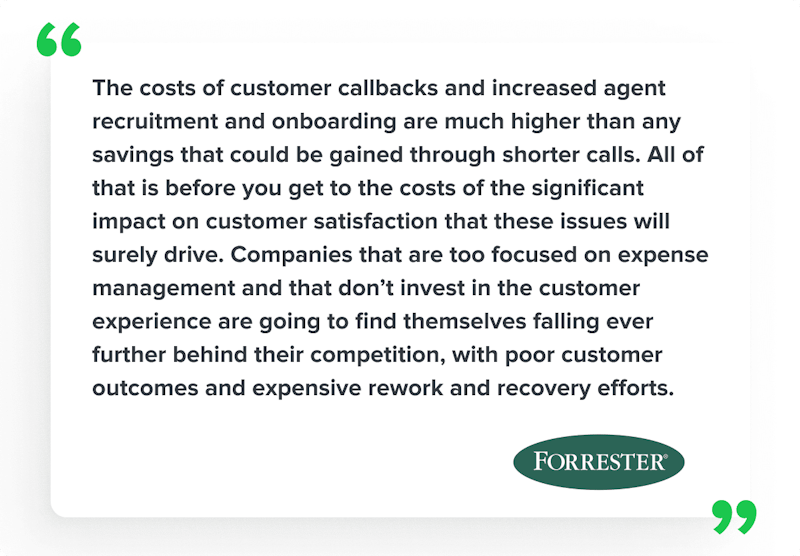
The solution to these woes starts with a shift in mindset.
A New View: Addressing Customers' Emotional "Moments of Truth"
Today's companies need to look at customer care through a new lens. After all, customers typically speak to care professionals more frequently than they talk with sales representatives. And often, as is the case in the Cigna scenario, customers are reaching out at critical moments when they need genuine empathy and support.
These emotionally charged conversations are "moments of truth," interactions or events that shape the customer's perceptions of the brand. Often, these encounters are challenging or stressful—such as a missed flight, a damaged product, a lost credit card, or an unexpected healthcare bill.
In these encounters, customers' emotions are likely to run high, and brand representatives need to respond skillfully. Care professionals must acknowledge the customers' emotional needs instead of sticking to a script or focusing solely on the company's agenda.
This customer-centric approach can pay off. According to a McKinsey & Company study of the financial industry, banks that handled "moments of truth" well gained more revenues from satisfied customers than banks that mishandled these critical interactions.
Following a positive experience, more than 85% of customers purchased more products or invested more assets with the bank. By contrast, more than 70% of those who had a subpar experience took at least some of their business elsewhere.

Clearly, the strategy of rushing through calls as a money-saver isn't the right way to go and can even cause companies to lose customers and revenues. Keeping costs in check is always wise, but not at the expense of sacrificing the customer experience. Those two aims are achievable, however, with the right human-technology balance.
The Right Mix of Technology and Human Expertise
Digital analyst Brian Solis explains that the key to reshaping customer care from a cost center to a profit center is making smart investments in both technology and people. According to Solis, companies that have invested in artificial intelligence (AI), automation, and agent empowerment and training have already started to see results. "It's an investment," he says, "in customer engagement that can deliver meaningful experiences, at scale, that lead to retention and ultimately loyalty."
The Right Technology: Conversational AI
As Solis explains, today's customers are more likely to first contact a brand through an automated digital touchpoint or a chatbot, both for pre-sales inquiries and customer service needs. That's why having advanced technology that can discern when web visitors may need advice or support and offer a proactive invitation to engage is a must.
If people choose to engage, brands must-have technology to discern their needs, provide meaningful advice, and let them access live, 1:1 human support if desired.
Conversational AI is the answer.
What's conversational AI? It's a giant step forward from rules-based chatbots that have a limited, scripted response set. Conversational AI combines natural language programming (NLP) and machine learning with human input to improve its ability to detect user intent and provide higher-value responses.
Over time, the AI learns from interactions and improves its understanding of human language, which means it can provide better assistance to customers. What's more, the AI's growing knowledge of human communication empowers the technology to formulate a natural response that emulates human expression. That means customers can have more positive experiences and feel more satisfied from their interactions.
As the adoption of conversational AI technology grows, customers will become more comfortable engaging with chatbots and other emerging technologies for support. This marks a big shift from just a few years ago. In 2018, consumer research found that less than half of people would engage with a chatbot. People simply didn't feel that chatbots were helpful or offered the detailed answers they needed.
By 2022, Gartner predicts that 70% of customer interactions will involve chatbots, machine learning, and mobile messaging. Clearly, the tide in digital customer care is shifting.
The Right Human Expertise: Empowered, Engaged Care Professionals
Technology is paving the way forward, but human expertise will always have an essential role in customer care. In fact, conversational AI presents new opportunities to revolutionize the customer care profession. By assessing user intent, conversational AI can help resolve simple customer queries and pass more complex issues along for human support. This approach frees service professionals up to work on higher-value tasks more deserving of their time and knowledge.
In fact, McKinsey & Company encourages companies to look at their customer care department as "talent factories." After all, most professionals know that there is no better way to learn the business than by speaking to its customers. By taking an intentional approach to cultivate learning and growth for customer care teams, organizations can promote employee happiness and increase customer satisfaction. Customer care can be a springboard for promotion for professionals who learn the nuances of the business from their time on the frontlines.
As Brian Solis notes, customer care professionals need access to the training and re-skilling they need to grow, along with technology that lets them skillfully navigate service interactions. Conversational AI can play a role here as well.
Here's how: Conversational AI does more than detect customer intents. It also analyzes discussions between care professionals and customers to determine which interactions were most successful. The AI can then present those past superstar exchanges to care representatives to help them navigate the current conversation. Through this process, agents have exact phrasing that has worked before and critical concepts to cover at their fingertips.
Conversational AI makes next-generation customer care available to brands today, as McKinsey & Company explains:
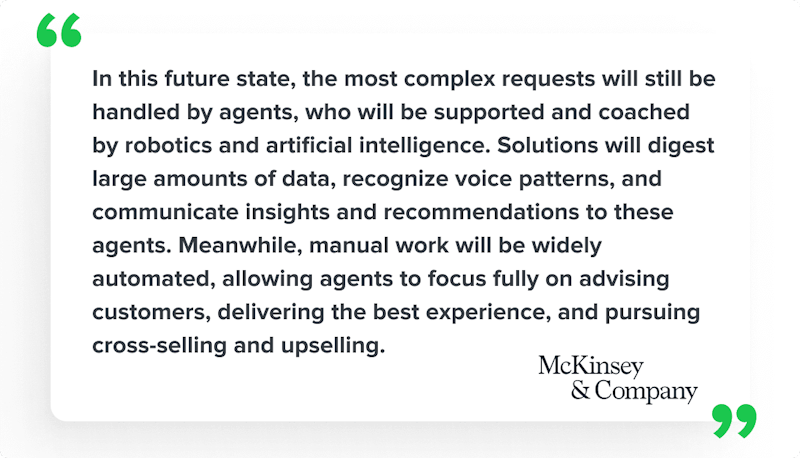
As care organizations turn to technology to eliminate repetitive, low-value work, team members can focus not only on serving customers but on identifying revenue-generating opportunities. They can deliver more meaningful advice to customers and learn at the same time, which leads to a greater sense of empowerment and competence. Higher job satisfaction can follow.
Happier Employees, Happier Customers, Higher Stock Price
Conversational AI can transform your care organization into a hub of collaboration where every customer contact propels you to deliver higher-quality service. You'll be able to help current team members advance and attract more talent with a passion for helping customers.
The link between employee satisfaction and customer happiness is well known, as proven by a 10-year analysis published in the Harvard Business Review. From 2008 through 2018, researchers compared employee ratings on Glassdoor to the American Customer Satisfaction Index (ASCI). The findings: Each one-star improvement on Glassdoor leads to an average 1.3 point gain ASCI scores—and even higher in industries with frequent customer contact.
While a 1.3 point rise in ASCI score may seem small, it's significant. Research published in the Journal of Marketing has found that each 1% improvement in ASCI scores was tied to a 4.6% boost in stock market value. So, the connection from employee happiness to customer satisfaction to financial gains is clear.
Customer Care is the New Profit Center
The idea that customer satisfaction and revenue go hand in hand isn't new. Nearly a decade ago, critical research published in the Harvard Business Review revealed that companies who have the best past experiences spend 140% more than those who received poor service.

Despite this, too many companies have pursued a cost-cutting, race to the bottom approach in customer care. Deflecting contacts and shortening call times was the norm.
Today, your company can do better, thanks to advanced technology. Conversational AI can help you discern whether customers can solve their problems through a chatbot or if they need human intervention. If live service is necessary, conversational AI can equip your representatives with successful past conversations to guide a positive resolution. Your care professionals can learn with each contact, which creates a virtuous circle of continuous improvement.
The truth is, you can deflect some contacts and automate manual work without sacrificing customer satisfaction. You can equip your agents with the knowledge and empower them to do their jobs better and feel more satisfied with their work. As your agents' motivation climbs, your customers will feel the effects and likely stay more loyal to your brand. Repeat purchases and higher revenues can follow.
It all starts with conversational AI, the next-generation technology that unlocks new levels of customer care excellence and financial growth for your business.

.png)
.png)



